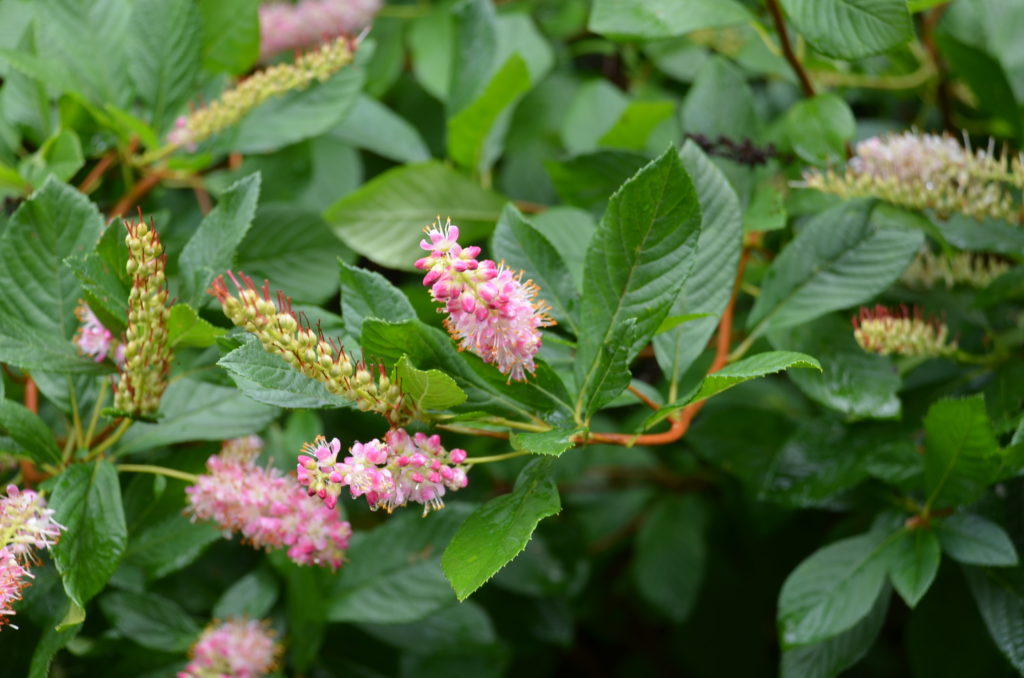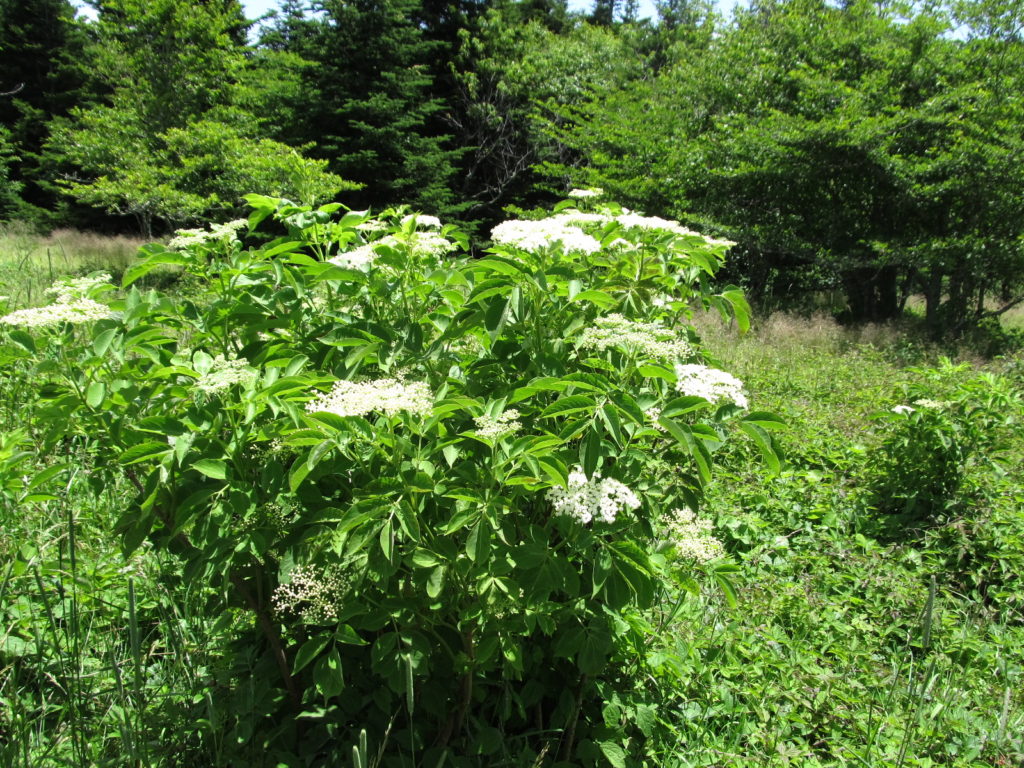These eight (8) shrubs amaze me by the numbers of bees and other pollinators that their flowers attract when blooming.
Virginia sweetspire (Itea virginica) is an erect, rounded, broad-spreading, deciduous shrub with arching branches. Itea grows 3-4 feet (less frequently to 5 feet) tall with similar spread. Fragrant, tiny white flowers borne in cylindrical, drooping racemes (3-6 inches long) cover the shrub from late spring to early summer. Oval, dark green leaves (1-4 inches long) turn varying shades of red, orange and gold in autumn. (USDA Hardiness Zones 5-9).
Elderberry (Sambucus canadensis) are known for their creamy white blooms against the glossy green foliage. Laceleaf and purple colored leaves are very ornamental. Elderberries attract great numbers of bees and other pollinators. They prefer a moist well-drained soil. (Zones 3-9).
Bottlebrush buckeye (Aesculus parviflora) spectacular 8-12 foot tall and 12-15 feet wide suckering summer flowering shrub in partial sunny areas; 8-12 inch white bottle brush flowers with showy red anthers and pinkish filament sand attractive dark green palmate leaves that turn bright yellow in the fall. (Zones 5-8).
Summersweet (Clethra alnifolia) grows 3-8 feet high. depending on cultivar. Sweetly fragrant white 2-6 inch long flower panicles attract hundreds of bees and butterflies in July. Flowers give way to dark brown seed capsules (1/8 inches diameter) which may persist into winter. Glossy dark green leaves (3-4 inches long) transition to shades of golden yellow in fall. (Zones 3-9).
Coralberries (Symphoricarpus spp.), represent several low ground cover shrubs. They produce tiny summer flowers which are browsed by many pollinators and fruits persist well into winter along arching stems. (Zones 2-7).
Bluebeard (Caryopteris spp.), aka blue mist shrub, is covered with brilliant blue blooms in late summer into fall and bees and butterflies come to them. (Zones 5-9).
Red Chokeberry (Aronia arbutifolia) grows 6-10 feet tall with spring blooms. Chokeberry grows in a stiff, upright vase shape habit and exhibits a fibrous rootsystem that suckers freely. Fruits are eaten by birds and other animals. (Zones 4-9).
Black chokeberry (Aronia melanocarpa) is another May blooming upright spreading, suckering shrub. It grows 3-6 feet tall with 5-6 flower clusters of white 5-petals which leads to tart, almost bitter black berries and purple/red fall leaf color in late summer. (Zones 3-8).



 Posted in
Posted in 
